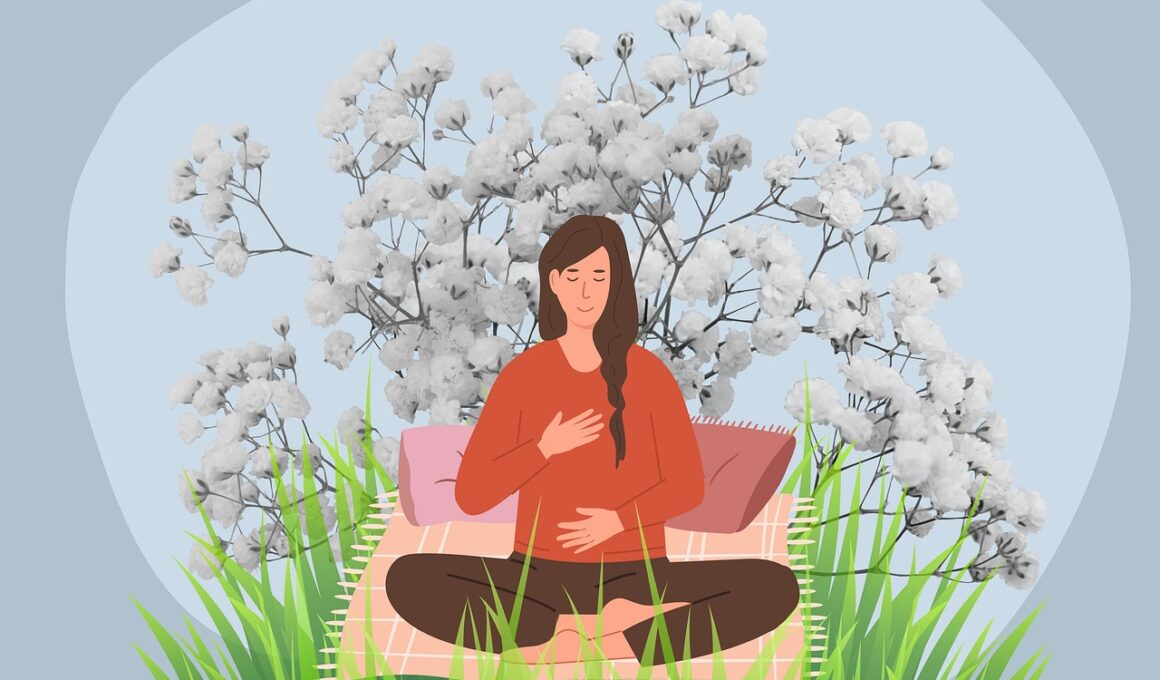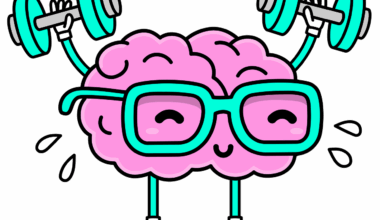Mastering Lateral Thoracic Breathing in Pilates
Breathing techniques are crucial in Pilates for optimizing performance and safety. Lateral thoracic breathing emphasizes the expansion of the ribcage, enhancing lung capacity. This method encourages engagement of intercostal muscles for better oxygen supply. First, inhale deeply, filling the lungs by expanding the ribcage sideways. Notice how the air impacts your body during various exercises. In contrast to abdominal breathing, lateral breathing maintains core stability while facilitating movement. This awareness is essential for both beginners and advanced practitioners. As you practice, focus on the sensations throughout your body; changing positions can enhance your understanding of breathing mechanics. Practicing this technique can significantly improve fluidity and endurance during Pilates sessions. By incorporating lateral thoracic breathing, you can effectively manage your energy and maintain focus. Remember that the breath should flow seamlessly with movement, creating a dance-like rhythm. Over time, you’ll find that your body naturally adapts to this technique. Consider adding breathing exercises into your routine to cultivate mindfulness and body awareness. Engage consistently in practice, and the benefits of lateral thoracic breathing will become apparent in your Pilates journey.
Understanding the mechanics of lateral thoracic breathing is essential for Pilates practitioners. Begin with proper posture; ensure that your spine is aligned and shoulders relaxed. As you exhale, imagine drawing your navel towards your spine to activate your abdominal muscles. The importance of timing cannot be overstated; coordinating breath with movement enhances the overall experience. As your ribcage expands laterally during inhalation, focus on keeping your chest lifted to prevent internal compression. Also, moving with your breath will deepen your connection with each Pilates exercise. Incorporate lateral breathing into basic movements like the Hundred or Roll Up to establish a foundation. As you progress, experiment with more complex exercises where lateral breath support is beneficial. Developing controlled lateral breathing while performing Pilates will enhance your overall stability. Regular practice can lead to new levels of flexibility and endurance. Always be conscious of how lateral breath affects your modified positions. Remember to adjust your breathing pattern according to your workout intensity. Seek guidance from a qualified instructor to master these techniques properly, ensuring that your practice is effective and safe at all times.
Benefits of Lateral Thoracic Breathing
Integrating lateral thoracic breathing into your Pilates routine offers numerous benefits. One of the primary advantages is improved oxygenation during exercises. Efficient breathing supports muscle function and energy levels throughout your practice. Additionally, this technique enhances intercostal muscle strength, which aids in chest expansion and decrease tension in the upper body. Practicing lateral breathing can also contribute to improved posture, as it promotes awareness of spinal alignment. Stronger core muscles lead to better stability during movements, decreasing the risk of injury. Mental clarity also benefits from regulated breathing patterns; focus on the breath can help quiet the mind during challenging workouts. Moreover, incorporating this technique can lead to overall improved performance across fitness levels. For those under stress, it acts as a calming mechanism, allowing the practitioner to regain composure. The technique can even enhance other forms of exercise by refining breath control and engagement. Hence, emphasize the practice of lateral thoracic breathing, as its overall holistic benefits extend far beyond Pilates. As you develop this skill, you will likely notice heightened physical and mental well-being during your sessions.
To effectively incorporate lateral thoracic breathing into your Pilates practice, consider starting with warm-up exercises. One of the simplest methods is the seated or standing lateral breathing exercise. Begin by sitting or standing comfortably; place one hand on your chest and the other on your abdomen. Take an exaggerated breath, focusing on expanding your ribcage sideways while keeping your shoulders relaxed. Repeat this for several cycles, slowly gaining awareness of your breath. Once familiar, introduce this technique into traditional Pilates movements, such as the Bridge or Spine Stretch. Remember to maintain the lateral breathing throughout each repetition. Focus on lengthening the inhalation and a controlled, slow exhalation; this rhythm is crucial for optimal function. Gradually raise the intensity as you build confidence with the technique. Listening to your body during practice allows you to adjust accordingly. Consider recording or monitoring your practice for personal progress. Group classes offer valuable insights, learning from experienced instructors who can provide further guidance. Embrace each session’s challenges while maintaining the breath pattern you’ve developed, fostering continual growth in your Pilates journey.
Common Mistakes to Avoid
When practicing lateral thoracic breathing in Pilates, avoiding common mistakes can lead to better effectiveness. Firstly, many practitioners forget to maintain alignment, which can hinder the benefits of the technique. Keep the spine neutral, shoulders down, and engaged throughout your breathing cycles. Additionally, do not force your breath; breathing should feel natural and not restricted. Overexertion may lead to tension or discomfort, which negates the benefits of relaxation that breathing provides. Secondly, be aware of your ribcage expansion; if your chest rises significantly during inhalation, your breath may not be lateral. Focus on proper ribcage expansion without lifting your shoulders or chest excessively. Another common error is forgetting to activate the core, which is vital for stability during Pilates exercises. Instead, allow your abdominal muscles to engage subtly as you breathe. Finally, remember not to rush; developing a controlled rhythm takes time and practice. Allow yourself to explore how lateral thoracic breathing impacts your movements gradually. Make periodic assessments of your technique to ensure its efficacy and continue enjoying the advantages it presents.
As you become more skilled with lateral thoracic breathing, consider extending its practice to daily life. This technique can significantly enhance your overall well-being, promoting mindfulness and relaxation beyond your Pilates sessions. Breathing exercises can be integrated into your morning routine to set a positive tone for the day. Practicing lateral breathing during stressful situations provides valuable coping mechanisms, allowing you to maintain composure in tense environments. Furthermore, consider enhancing your knowledge by exploring literature on breathing techniques; many resources demonstrate effective methods to deepen this practice. Online courses or workshops can also provide valuable insights into various breathing practices used in Pilates and other disciplines. Seek testimonials from experienced practitioners to understand how effective lateral thoracic breathing influenced their journeys. Staying informed can inspire you to explore further or develop new skills. Remember to revise your approach regularly, incorporating new strategies as you progress. By fostering this connection between breath and movement, you will gain a profound understanding of your body. Enjoy the journey and skill-building as you integrate lateral thoracic breathing into all aspects of your life.
Conclusion
In conclusion, mastering lateral thoracic breathing in Pilates can revolutionize your practice. As you learn to integrate this technique into your routines, expect to see improvements in performance and overall well-being. Through consistent practice, awareness and mental clarity can enhance your practice on multiple levels. Emphasizing controlled breathing patterns fosters stability and promotes the connection between body and mind. It’s essential to maintain proper posture throughout the exercises; a strong foundation supports effective lateral breathing. Remember to focus on the rhythm established between breath and movement, helping to create fluid transitions during your Pilates sessions. Connect with qualified instructors to get additional feedback and refining your techniques, ensuring you reap maximum benefits. Maintaining a consistent practice is crucial, as it fosters growth and experimentation with new exercises. Pay attention to your body’s response and adjust techniques to fit your individual needs. Finally, embrace the challenges presented as opportunities for self-discovery. Engaging wholeheartedly in the mastery of lateral thoracic breathing will undoubtedly elevate your Pilates journey and empower overall well-being.
Take your Pilates practice to new heights through mastering lateral thoracic breathing. As you embrace this journey, know the limitless potential it holds for your fitness goals.


